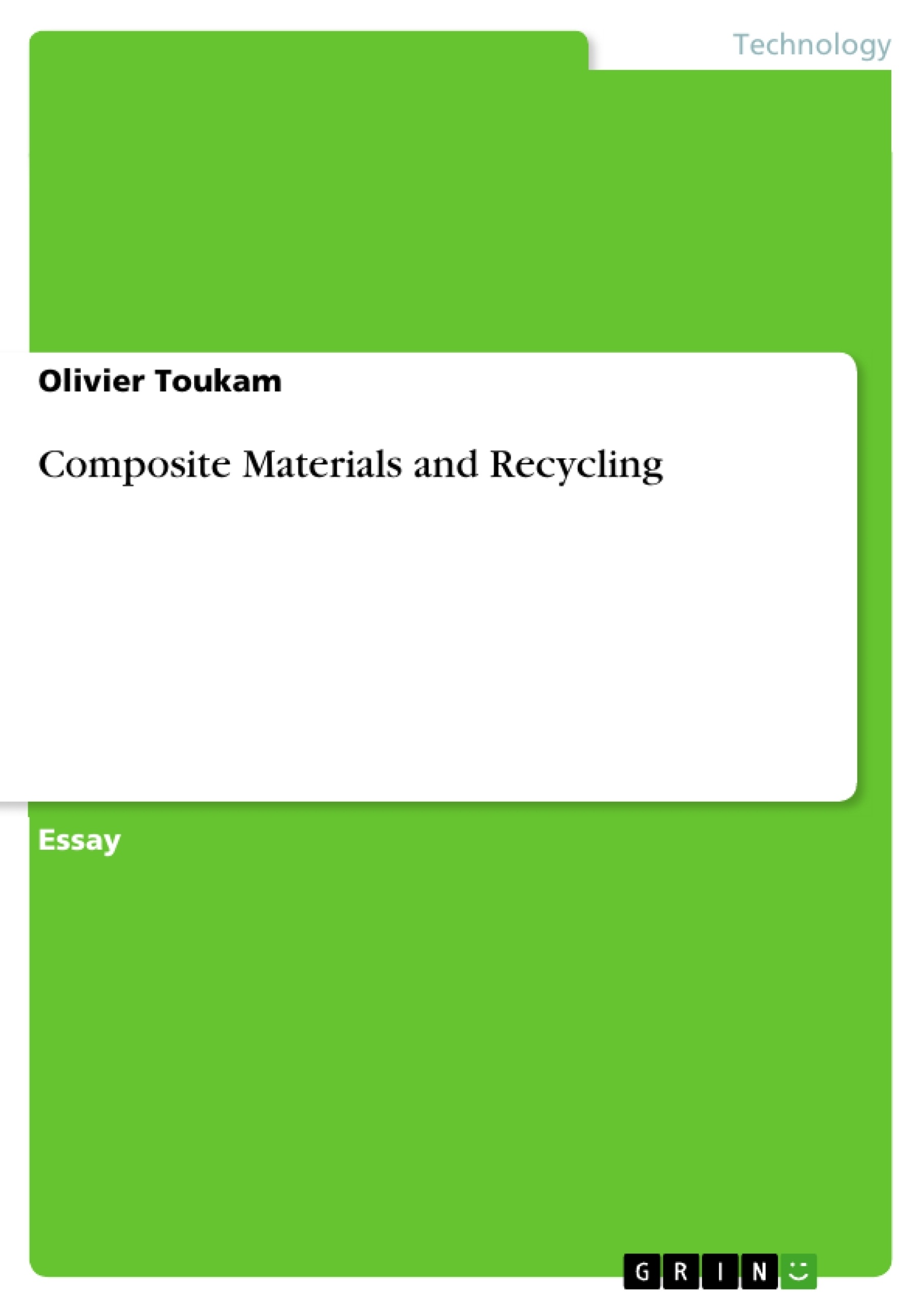Nanotechnology is often touted as the biggest scientific breakthrough of the 21st century. The potential impacts of nanotechnology arise from the altered physicochemical properties of the materials at the nanoscale that enable a broad spectrum of novel applications. It is beyond doubt that the inherent properties of nanoscale materials do pose several new challenges. Some of these include identifying and characterizing new risks associated with the widespread use of nanomaterials, evaluation of economic and environmental trade-offs, and addressing the public and regulatory concerns about this new technology. Various researchers and agencies have identified the need for a holistic evaluation of nanotechnology using Life Cycle Assessment (LCA). But nanotechnology is still in its infancy and nanomanufacturing processes are evolving rapidly.
Inhaltsverzeichnis (Table of Contents)
- Nanotechnology Composite Materials and recycling
- Nanocomposites
- Recyclability of Nanocomposites
- Ecodesign for Recycling
- Conventional Composites
- Glass Fiber Reinforcement
- Carbon Fiber Reinforcement
- Recycling of Conventional Composites
- Natural Fibers Reinforced Composites
Zielsetzung und Themenschwerpunkte (Objectives and Key Themes)
This document explores the challenges and opportunities associated with recycling composite materials, specifically focusing on the emerging field of nanocomposites. It examines the impact of nanocomposites on the recycling process and discusses potential solutions to address the challenges they present. Additionally, the document explores the recyclability of conventional composites, emphasizing the advantages of utilizing natural fibers as a more environmentally friendly alternative.
- The impact of nanocomposites on recycling
- The role of ecodesign in promoting recyclable products
- The recyclability of conventional composites
- The potential of natural fibers as an environmentally friendly alternative
- Technological innovations in recycling composite materials
Zusammenfassung der Kapitel (Chapter Summaries)
The text begins by introducing the concept of nanocomposites and highlighting their potential impact on recycling. It discusses the challenges posed by nanocomposites, including their impact on existing recycling processes. The document then emphasizes the importance of ecodesign in promoting the recyclability of products and examines how design considerations can mitigate the challenges associated with nanocomposite recycling.
The text further explores the recyclability of conventional composites, focusing on the three major types of fiber reinforcements: glass fiber, carbon fiber, and aramid. It delves into the history and properties of each material and discusses their use in various applications.
The document examines the technical challenges and economic aspects of recycling conventional composites, highlighting the importance of efficient grinding processes to separate fibers from plastic. It also presents existing recycling methods, such as pyrolysis and co-processing in cement production.
The final section of the text discusses the environmental benefits of using natural fibers as reinforcement materials in composites. It explores the properties and applications of natural lignocellulosic fibers, emphasizing their potential to reduce dependence on non-renewable resources and minimize environmental pollution.
Schlüsselwörter (Keywords)
This document focuses on the key concepts of composite materials, recycling, nanocomposites, ecodesign, conventional composites, natural fibers, and their respective environmental implications. It further emphasizes the importance of technological innovations in developing sustainable recycling processes for composite materials.
- Quote paper
- Olivier Toukam (Author), 2010, Composite Materials and Recycling, Munich, GRIN Verlag, https://www.hausarbeiten.de/document/165020


